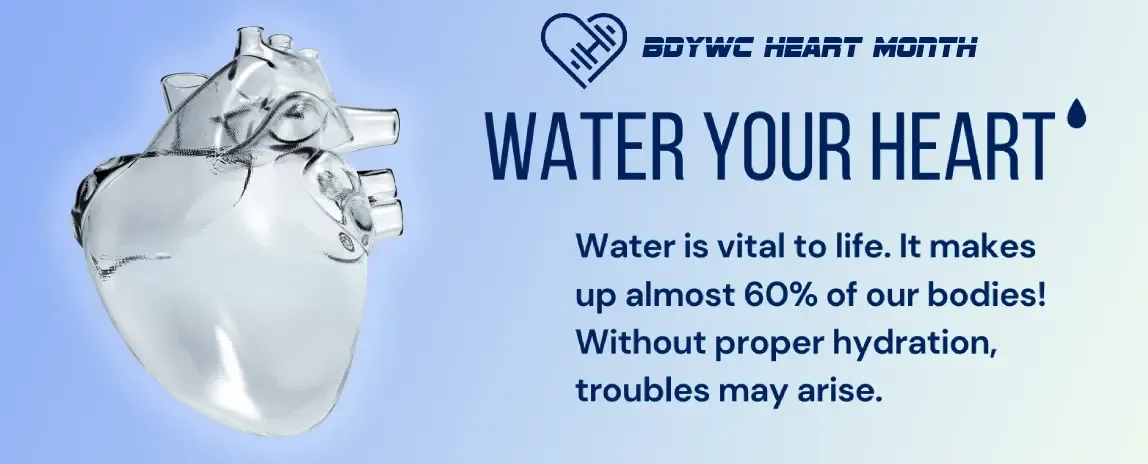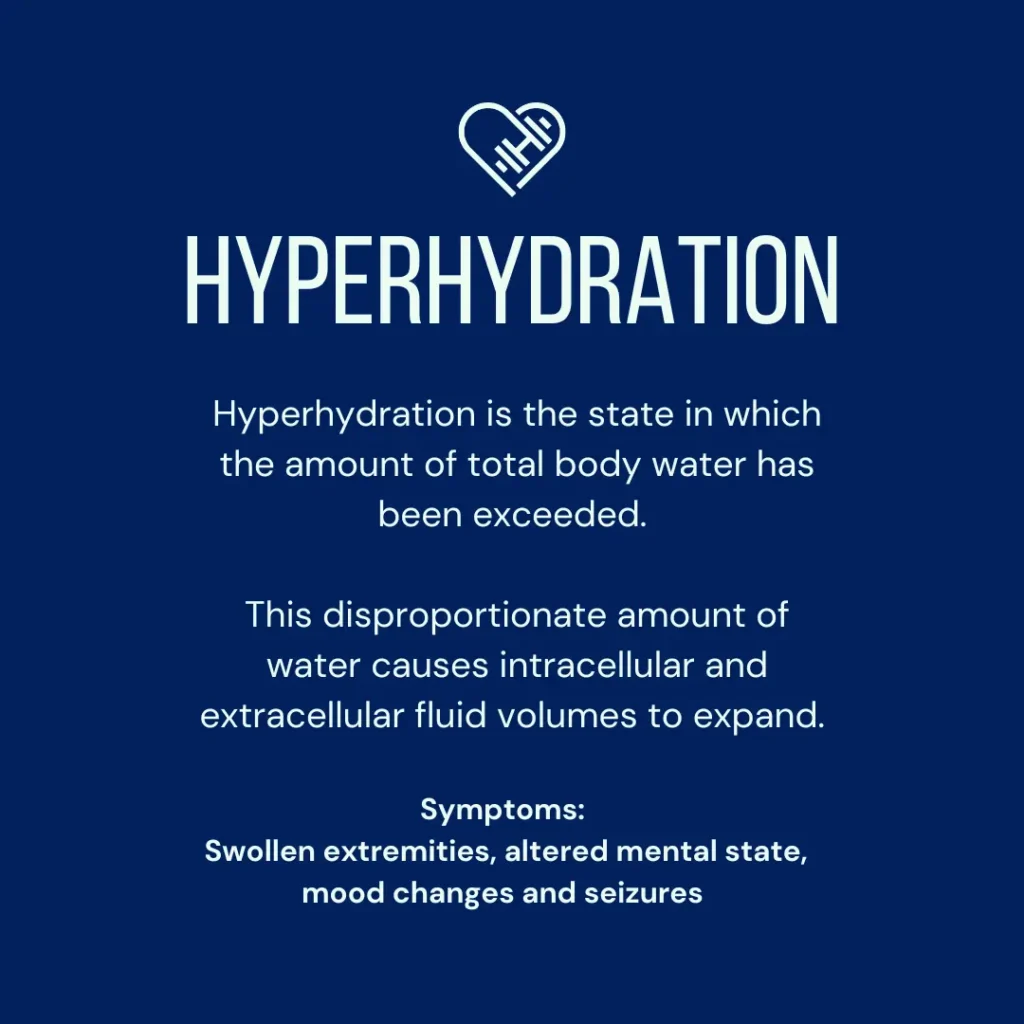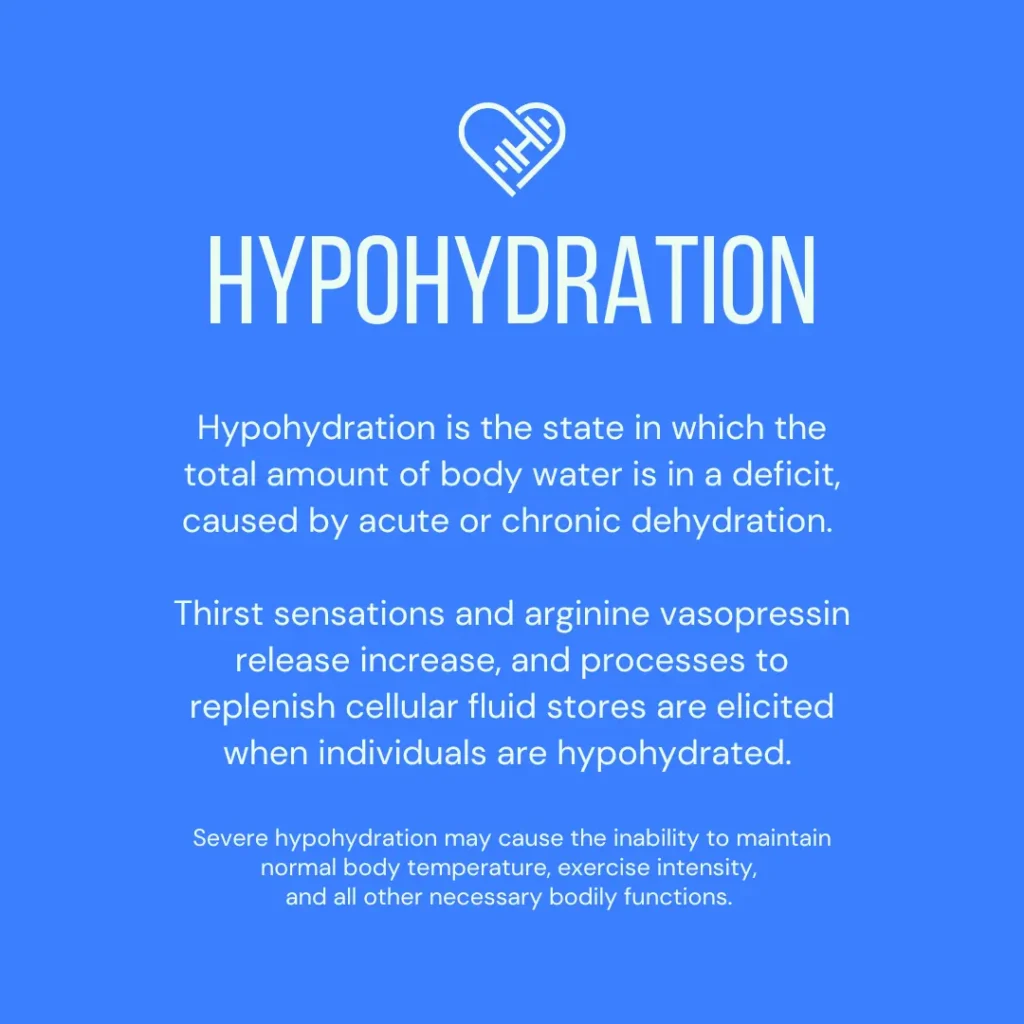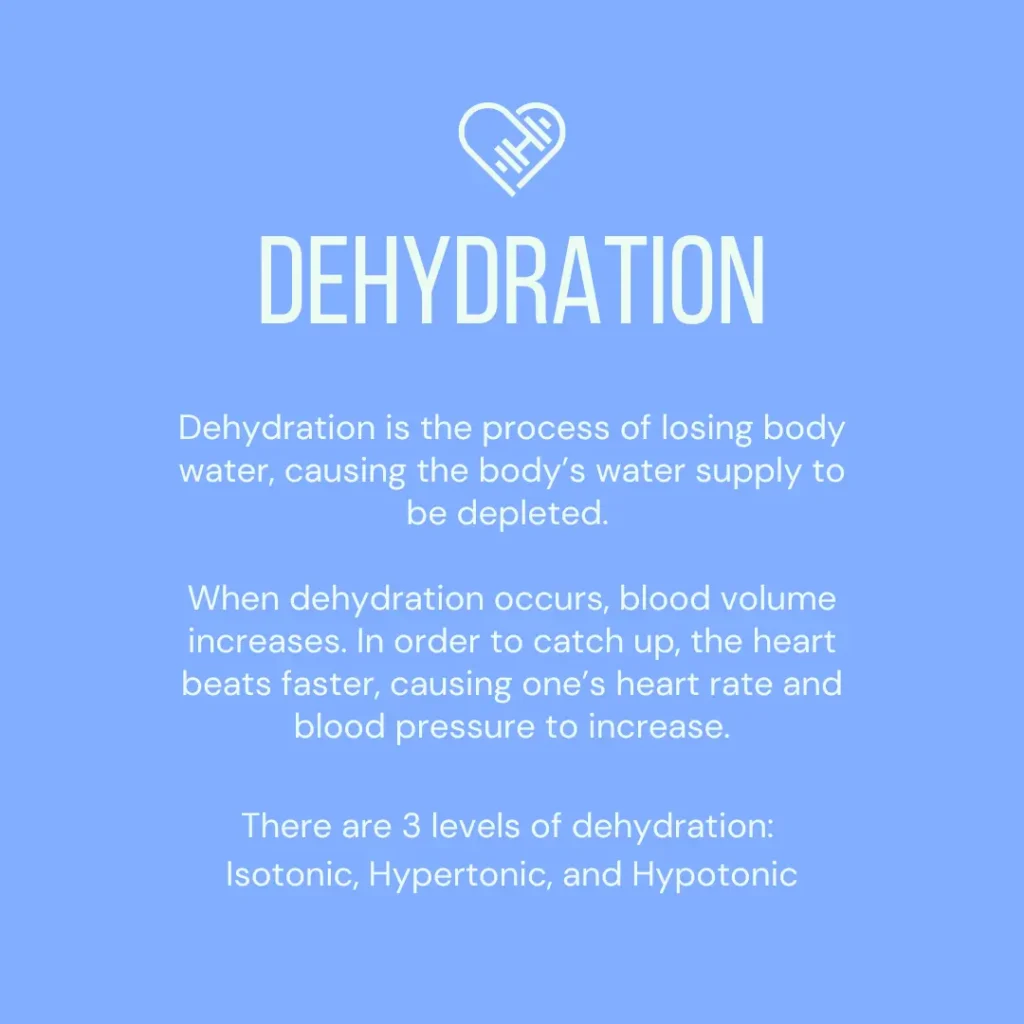
February 25, 2023
BDYWC Heart Month
ALL BLOGS POSTED BDYWC HAVE BEEN BACKED BY RESEARCH. PLEASE VIEW THE RESOURCES FOR THIS ARTICLE BELOW USING THE “RESOURCES” BUTTON.
The heart is an organ that pumps blood throughout the body. It is made up of multiple layers of tissue. Blood moves throughout arteries, veins, capillaries, all throughout the body. Blood carries oxygen and nutrients that our organs need to function properly. Carbon dioxide is also carried through the blood to the lungs to be exhaled.12

The entire body needs water to regulate body temperature, infection prevention, deliver nutrients throughout the body through blood, and to keep organs functioning properly.14

There are various levels of hydration. Meeting your daily intake for water is important to keep your heart healthy – if not, there can be serious consequences.


Euhydration is the state in which an individual’s total body water content is optimal. In this state, the body is able to control its temperature and complete all functions properly.



The United States Department of Agriculture has set a daily limit for total caffeine at 400mg per day for adults. There is great debate about whether or not caffeine is a diuretic, causing dehydration. Caffeine can be a diuretic if high doses of caffeine are taken all at once, but research suggests that the fluid in caffeinated drinks balances the diuretic effect of typical caffeine drinks.
Symptoms such as chest pain, irregular heartbeat, and stroke have been reported when individuals have exceeded the daily threshold of caffeine. Caffeine poisoning can happen with 1,200mg of pure caffeine according to the United States Food and Drug Administration.
The heart can be significantly affected by exercise. Considerable increases in blood pressure during exercise has been associated with greater future incidence of hypertension, cardiovascular, and cardiometabolic disease risk.4
Individuals should be aware of their water intake and ensure they are drinking enough to match their exercise intensity. Individual fluid consumption varies from person to person. Water should be consumed according to rest, before, during, and after exercise. If more water than necessary is consumed, a condition called Exercise Associated Hyponatremia may occur.
Excessive fluid consumption of hypotonic fluids (including sports drinks) causes extracellular body water to enter the cells. With reduced renal (kidney) water clearance, the fluid has nowhere to go for an hour or more, causing organ and tissue swelling. This condition is known as Exercise Associated Hyponatremia.
This condition causes the brain cells to swell, lightheadedness, dizziness, nausea, puffiness of the extremities or face, muscle cramps that do not resolve as usual, and body weight gain. If the condition goes untreated, it can cause an altered mental status, confusion, disorientation, agitation, delirium, phantom running, seizures, coma, and signs of herniation. In severe cases, EAH can be fatal via cerebral or noncardiogenic pulmonary edema.
If physically active individuals adequately replace sodium losses and do not consume excess fluids, they can prevent EAH.
Exercise Associated Hyponatremia has been identified in 10%-20% of distance athletes after events.5

Kilyn Parisien
Kilyn Parisien is the BDYWC Marketing Specialist, an experienced and knowledgeable writer who creates informative and engaging blog content to promote the facility’s mission and services.
The BDYWC blog is a valuable resource for youth fitness enthusiasts, offering informative and engaging content on various topics related to health, wellness, and fitness.
If you have any ideas for blogs, feel free to contact us and share your suggestions!
BDYWC is a 501 (c)(3) non-profit located in Belcourt, ND.
Tax ID Number: 32-0444966
1500 BIA Road 7, Belcourt, ND 58316
BDYWC is Currently Under Construction | Opening Again in Spring 2024
Support Our Youth Fitness Facility and Make a Difference! Become a Bronze, Silver, or Gold Sponsor to a Youth Athlete Today!
Copyright © 2024 BDYWC